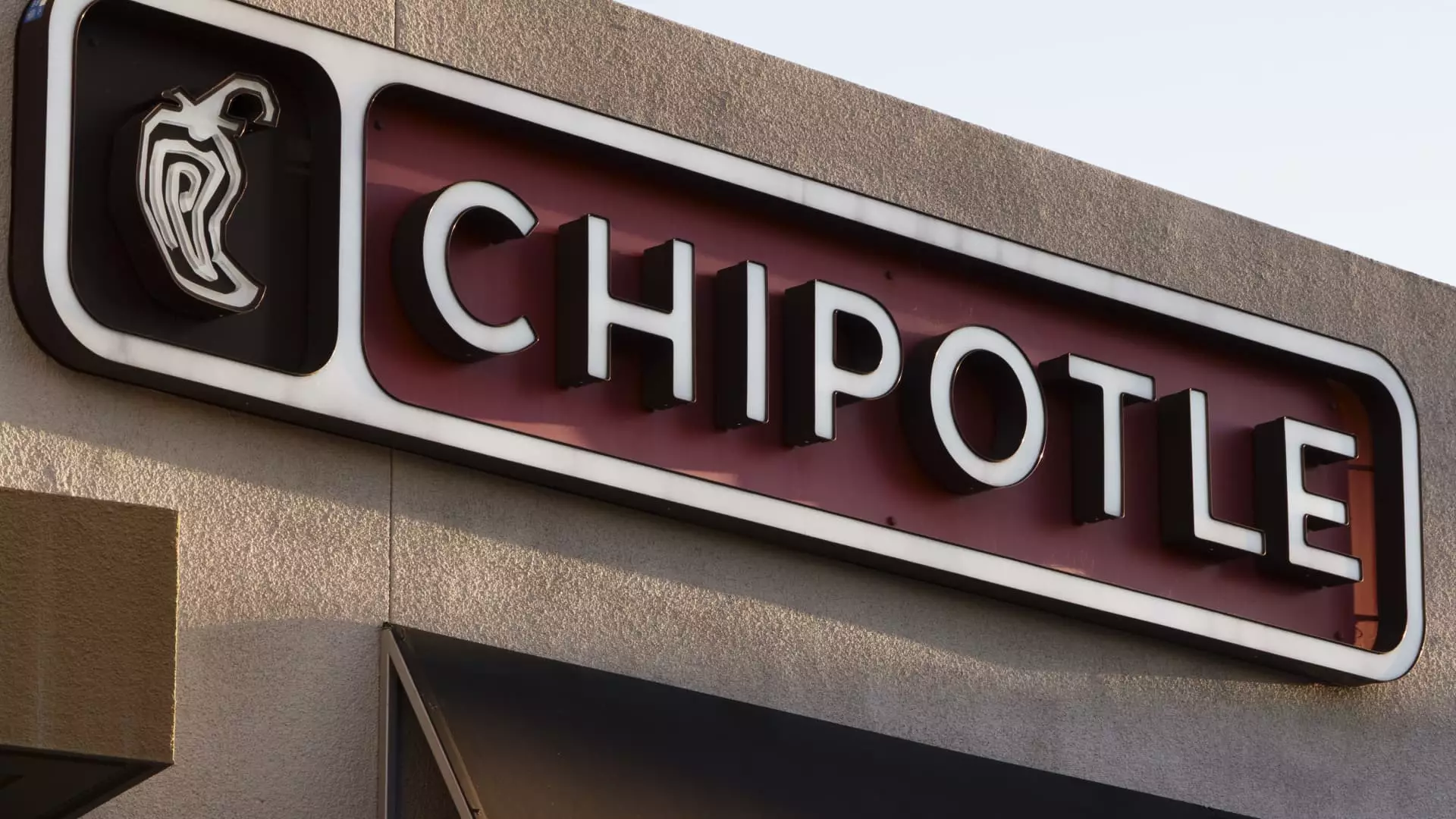As the second-quarter earnings season advances into full swing, investor sentiment is riding a wave of cautious optimism, but beneath this buoyancy lurks significant underlying risks. While nearly 85% of S&P 500 companies that have reported so far have exceeded expectations, such data can create a misleading narrative of endless growth. The truth, often masked by inflated stock valuations and speculative trading, is that many of these earnings surprises are either temporary, driven by accounting maneuvers, or reliant on extraordinary market conditions. It is irresponsible to accept a cheerleading outlook without critically examining whether the fundamentals truly justify a sustained rally or merely serve as a veneer over systemic vulnerabilities.
Wall Street’s Favorite Stocks: A Closer Look at the Propaganda
Stocks like Chipotle Mexican Grill and Southwest Airlines are once again in the spotlight as potential candidates for sharp swings this week. However, one must question the narrative spun by analysts and market algorithms. Chipotle, down nearly 13% in 2025, is expected to see a modest 6% move in either direction following its earnings report. While some analysts, such as those from BMO Capital Markets, have upgraded the company, their optimism is often driven more by strategic projections rather than concrete execution. The firm’s forecast of accelerating same-store sales and margin improvements may be overly optimistic, relying on assumptions about consumer behavior and market share that are fragile at best.
Similarly, Southwest Airlines has been buoyed by strategic upgrades from Deutsche Bank, citing new leadership and improved operational initiatives. Yet, considering the turbulent macroeconomic environment, the airline industry remains vulnerable to rising fuel costs, inflation, and potential recessionary headwinds. It would be naive to assume that past stock gains or optimistic forecasts can fully offset broader economic risks that are intensifying globally.
The Illusion of Peak Performance in Telecom and Heavy Industry
Charter Communications, which has enjoyed a 13% rise this year, exemplifies how market narratives can celebrate seemingly promising merger prospects while neglecting the complex realities of integration and regulatory hurdles. The anticipated merger with Cox Communications, projected to close in 2026 and touted as a transformative catalyst, is just another gamble that may or may not pay off. Relying heavily on optimistic projections of scale efficiencies and leverage reduction ignores the unpredictable consequences of large mergers, including potential anti-trust scrutiny or operational chaos.
Furthermore, corporations such as Danaher, IBM, and GE Vernova are also in the spotlight, often praised for strategic moves, technological innovation, and restructuring efforts. But these companies are not immune from macroeconomic pressures, supply chain disruptions, or competitive struggles. The risk is that investors are painting an overly rosy picture based on headline-driven valuations rather than genuine resilience.
Challenging the Narrative of Unstoppable Growth
From a center-right liberal perspective, it is critical to approach such bullish forecasts with skepticism. The market’s current exuberance often overlooks fundamental vulnerabilities—rising geopolitical tensions, inflationary pressures, and potential policy shifts that could erode earnings. While some companies may indeed outperform temporarily, the broader economy remains fragile, and market exuberance tends to be self-fulfilling only until reality forces a brutal correction.
The tendency of analysts and traders to focus on short-term movements based on options market signals can lead to distorted expectations. These signals are often manipulated or driven by speculative positions rather than genuine conviction about long-term value. Investors should be wary of betting heavily on “hot” stocks such as Chipotle or Charter Communications without acknowledging the structural issues that could undermine their performance down the road.
The ideal approach should balance cautious optimism with vigilant scrutiny. The current market narrative, heavily influenced by strategic upgrades and speculative trading, might foster short-term gains but risks incentivizing reckless behavior. If policymakers tighten monetary policy, or if unforeseen macroeconomic shocks hit, the illusion of perpetual growth will shatter, leaving unprepared investors exposed to significant losses.
In this environment, a more disciplined, fundamentals-driven mindset is essential. Overconfidence in the resilience of these stocks ignores the volatile and unpredictable factors at play. The recent rally masks deep-seated vulnerabilities—overleveraged companies, overbloated valuations, and fragile consumer confidence—that can turn sour quickly.
The reality is that market gains are increasingly decoupled from underlying economic strength, which should serve as a warning. While some stocks might rally based on short-term catalysts, the long-term outlook remains uncertain and perilous. Investors need to adopt a skeptical stance—question assumptions, evaluate risks critically, and avoid the allure of the hype surrounding these so-called growth stories. The road ahead is littered with traps, and those who fail to see beyond the surface may suffer the consequences when the bubble finally bursts.

